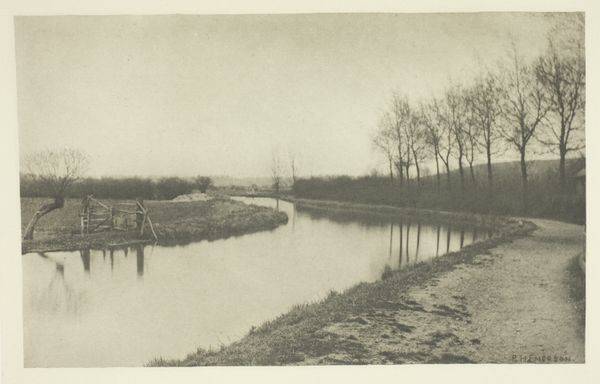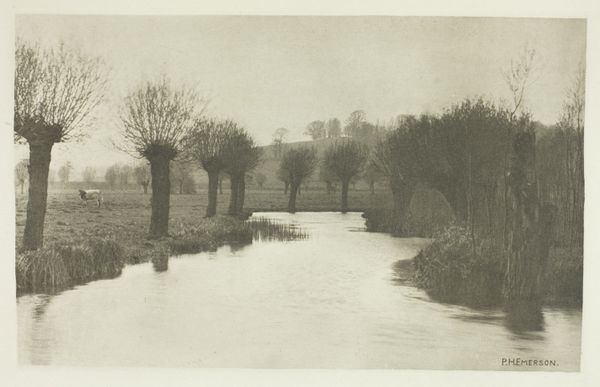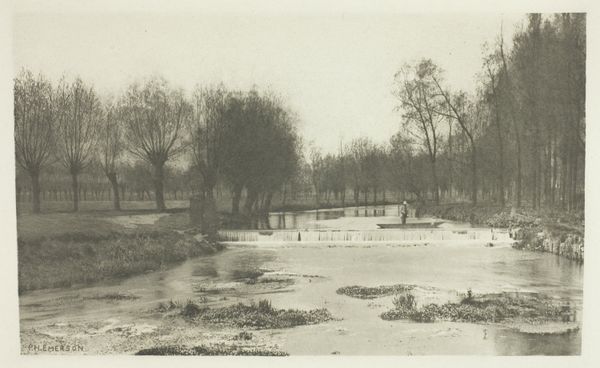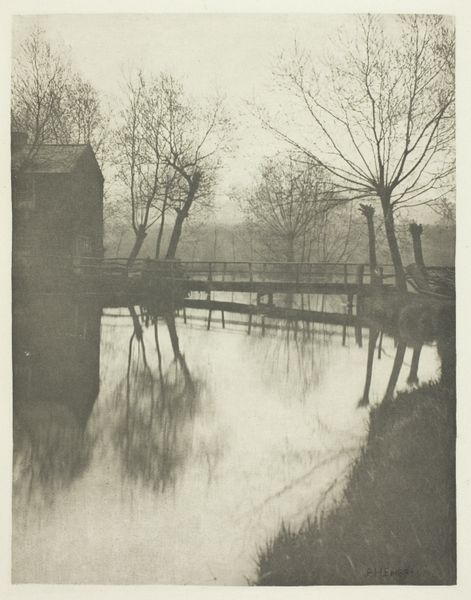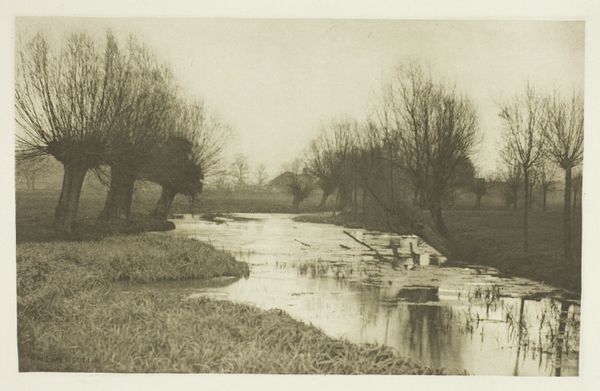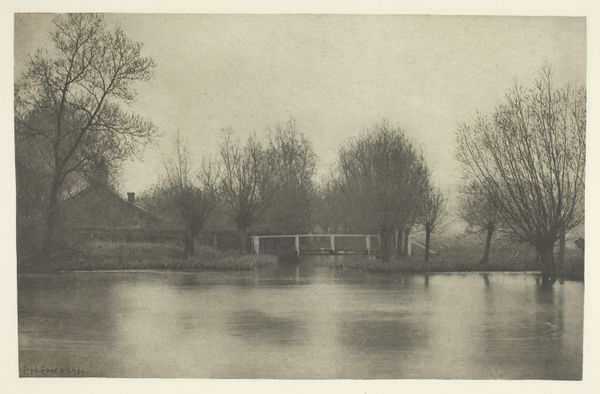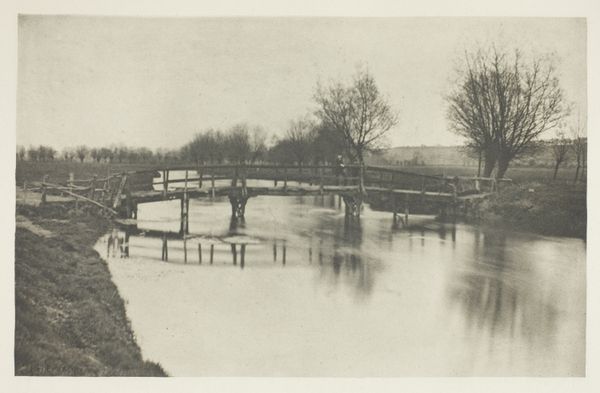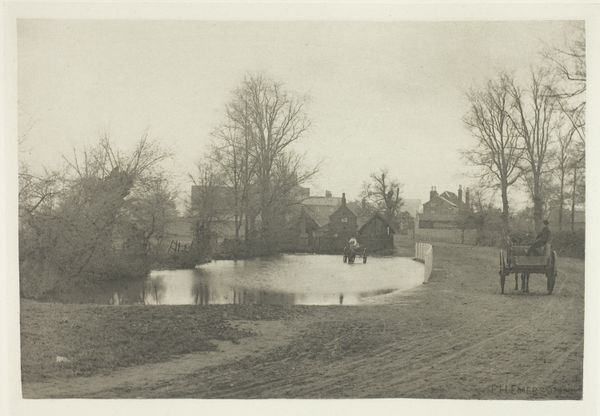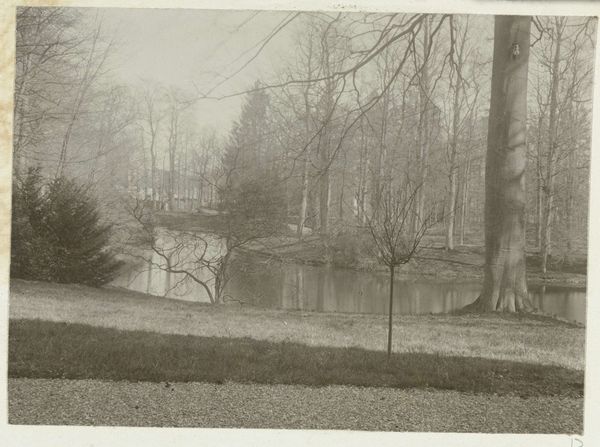
photography
#
pictorialism
#
impressionism
#
landscape
#
photography
#
realism
Dimensions: 11.7 × 21.1 cm (image); 14.4 × 23.1 cm (paper); 24.4 × 31.8 cm (album page)
Copyright: Public Domain
Curator: Peter Henry Emerson's "The Black Pool, Near Hoddesdon," taken circa 1880s, offers a tranquil glimpse into rural England through the lens of Pictorialist photography. It resides here at the Art Institute of Chicago. Editor: There's a stillness to it. Almost haunting. The limited tonal range contributes to a subdued, reflective mood. It evokes a feeling of being caught between presence and absence, very liminal. Curator: Emerson’s Pictorialism aimed to elevate photography to fine art, often mirroring painting styles of the time, especially Impressionism. He wasn't just capturing reality, but interpreting it, similar to the impressionistic treatment of landscapes we see from that period. The focus on mood over sharp detail achieves this. Editor: Absolutely, but I wonder about the politics embedded in this idealization. Who is centered in these portrayals of idyllic rural life? While capturing this quiet scene by the pool, what about the lived experiences of those disenfranchised during that era, like the poor and those from exploited classes and colonies who enabled this leisurely lifestyle. Does this image tacitly reinforce social hierarchies? Curator: It's a valid point to question the image’s exclusivity; landscape art can unintentionally romanticize the status quo. However, let’s consider also the deeper symbolic layer of water as a symbol. The reflection is critical: is it revealing truth, hiding it, or simply creating an alternative reality, mirroring psychological aspects of self and identity? Editor: Well, given the rapid industrialisation underway at the time, and considering the history of ecological devastation caused by colonization, does that ‘mirroring’ reflect not only inner psychological truths but a societal reckoning, the murky depths of Britain’s colonial enterprise? What were the economic impacts on England's resources during the height of its imperialism? Curator: It seems Emerson's image continues to offer layers of consideration, a delicate balance between aesthetic beauty and cultural introspection, encouraging us to think about more than just what meets the eye. Editor: Precisely. I appreciate how art prompts necessary and complex dialogue, pushing boundaries and asking difficult questions about what we think we know and accept as cultural and societal truth.
Comments
No comments
Be the first to comment and join the conversation on the ultimate creative platform.

